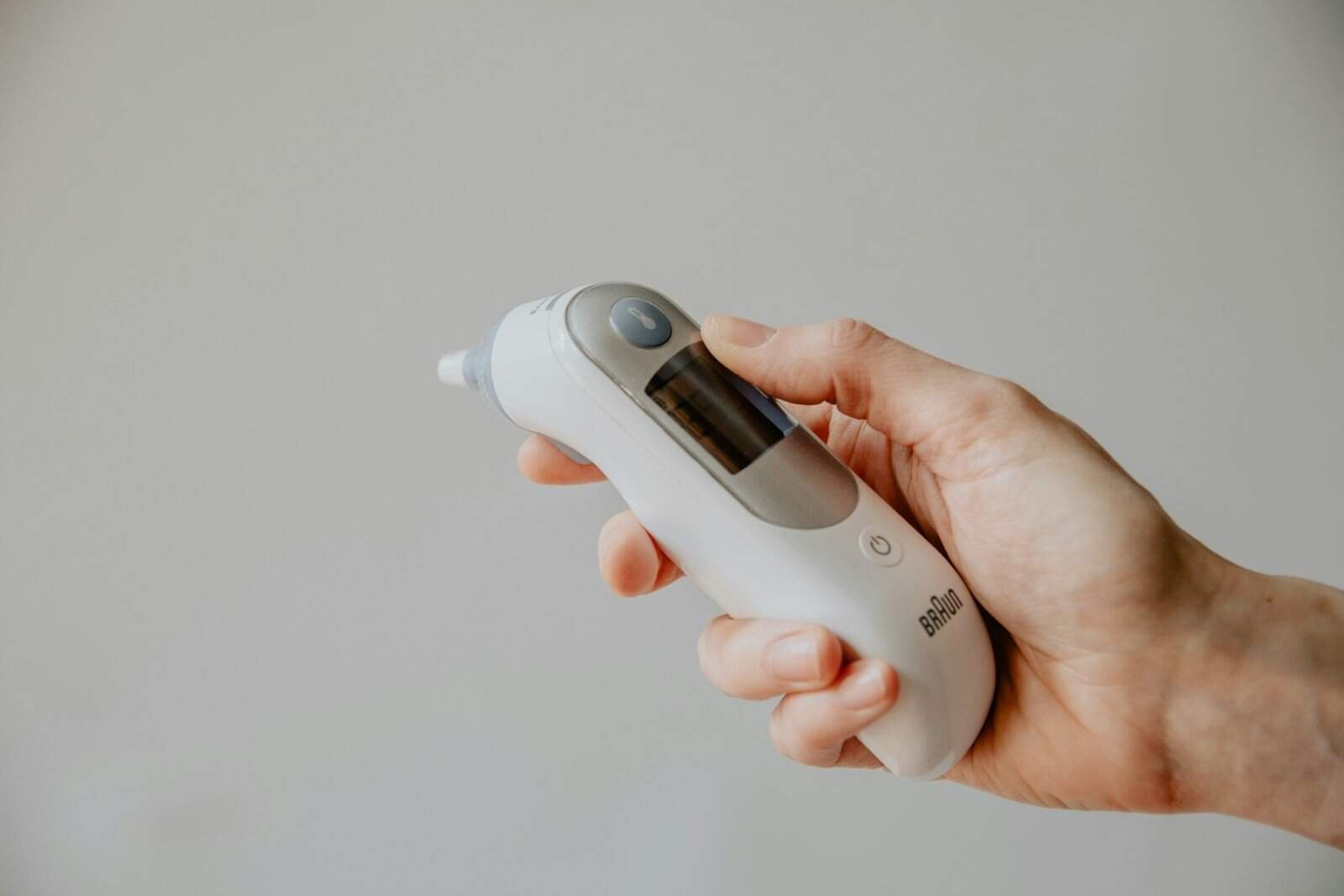
Allergies and Canines
Not all dog breeds affect people with allergies in the same way. Poodles, for example, have coats that rarely set off allergy symptoms as much.
Types Of Dog Allergies
Dog allergies fall into three main types: skin allergies, food allergies, and environmental allergies.
Skin allergies, or atopic dermatitis, are pretty common. Dogs with skin allergies often scratch, chew, or lick themselves, and you’ll see redness or even ear infections.
Food allergies aren’t as common, but they’re still a headache when they show up. They might cause itchy skin, an upset stomach, or ongoing ear infections. Dogs with food allergies usually need a special diet to get back on track.
Environmental allergies pop up when dogs react to things like pollen, dust, or mold. You might notice sneezing, runny eyes, or lots of paw licking. Sometimes it’s tough to figure out the cause, and dogs might need tests to pinpoint the trigger.
Sources of Dog Allergies
Proteins in a dog’s dander, saliva, and urine usually set off dog allergies. Dander is just tiny flakes of skin. Even low-shedding dogs like poodles still release some dander.
When a dog licks or grooms itself, proteins from saliva stick to the fur and skin. These end up floating around the house as dust.
Dog urine has allergy-causing proteins too. Dogs can spread these on floors or furniture.
Poodles get a lot of hype for their hypoallergenic coats, but, no breed is totally allergy-free. If you keep up with grooming and cleaning, you can lower allergen levels at home.
Dogs Who Have Allergies
Allergies aren’t just a human thing; plenty of dogs deal with them too. Poodles might be hypoallergenic for people, but they can still get allergies themselves.
Common Triggers For Puppy Allergies
Dogs can react to many things. Common triggers are pollen, dust mites, certain foods, grasses, mold, and insect bites like fleas.
For poodles, skin allergies are pretty common. Poodle puppies might scratch or bite at their skin when they run into seasonal allergens like grass or ragweed. Food ingredients such as wheat, chicken, or dairy can also set off a reaction.
Some puppies react to chemicals in shampoos or household cleaning products. Flea bites can drive them nuts, especially if they’re allergic to flea saliva. Keeping things clean and using gentle products can help cut down on these triggers.
How Dog And Allergies Interact
When a dog with allergies meets a trigger, the immune system acts like there’s a threat. That usually brings on itching, redness, sneezing, watery eyes, or even tummy trouble.
Poodles, even the little ones, might get red patches or bumps on their skin. Some start licking their paws a lot or lose fur in patches.
Allergies can look like other health problems, so it’s tricky sometimes. Watch for things like frequent scratching, ear infections, or stomach issues. If things don’t get better, it’s time for a vet visit and a proper diagnosis.
Every poodle is different. Some breeze through with mild issues, while others need daily help. If you’re curious, here’s more about skin allergies in poodles.
Managing Dog Allergies
Dog allergies can cause itching, skin problems, and a bunch of other issues that really mess with a dog’s quality of life. Spotting triggers early and knowing the signs makes a big difference in helping dogs feel better.
Causes of Dog Allergies
Most dog allergies start when the immune system overreacts to the environment or food. Pollen, dust mites, mold, flea bites, and foods like beef, chicken, or dairy are usual suspects.
Some dogs—poodles included—are just more likely to get allergies thanks to their genes. Allergens can get in through the skin or airways. Even contact with grass, shampoo, or cleaning products can set things off.
Fleas are a classic cause of itching. Dogs with sensitive skin seem to have it worse, especially if they’re exposed for a while. For poodles and other breeds, regular cleaning and using gentle products can help keep things under control. You might want to check out these tips for poodles with skin allergies.
Symptoms of Dog Allergies
Symptoms can be all over the place, from mild to pretty rough. Dogs might scratch, bite, or lick their skin a lot, which leads to redness, sores, or even hair loss. Chronic ear infections, head shaking, and a musty smell are also common. Watery eyes and sneezing show up if the allergen’s floating in the air.
Sometimes, vomiting or diarrhea hints at food allergies. It’s important to figure out the cause since allergy symptoms can look a lot like other health problems.
Symptoms might spike at certain times of the year—like when pollen’s everywhere. If you keep a log of flare-ups, it can help spot patterns. Tell your vet about early signs so they can help sooner.
Dog Allergy Treatment and Prevention
The first step is to remove or avoid whatever’s causing the allergy. Regular baths, hypoallergenic shampoos, and a clean home help a lot. Vacuuming, washing bedding, and using air filters can lower allergens inside. For food allergies, switching to a limited-ingredient or hypoallergenic diet might be the answer.
Medications like antihistamines, steroids, or prescription allergy meds can help with itching and inflammation. Antihistamines work for a lot of dogs, according to Wild Earth Pet Food.
For tougher cases, allergy shots, or immunotherapy from a vet dermatologist might be needed. Flea control is super important if fleas are part of the problem. Working with your vet helps you find the safest and most effective plan for your dog. Staying consistent with care really does make a difference.
Preventing Dog Allergies
Dog allergies can be a pain, but there are plenty of ways to cut down on dander and other irritants. Good cleaning habits, air filters, and smart grooming routines really help people with sensitivities.
How to Reduce Dog Allergy Exposure
Start with regular cleaning to cut down on allergens at home. Vacuuming with a HEPA filter two or three times a week pulls pet hair and dander out of carpets and furniture. Washing bedding, curtains, and dog toys every week helps keep things under control.
Set up pet-free zones—especially in bedrooms—so you can sleep without extra dander around. Brush and bathe your poodle outside or away from main living spaces to catch loose hair and dander before it spreads. If you have allergies, washing your hands after petting your dog can keep allergens away from your face and eyes.
Here’s a handy table for reducing allergy exposure:
| Method | Frequency | Benefit |
|---|---|---|
| Vacuum with HEPA | 2–3 times/week | Removes dander and hair |
| Wash bedding/toys | Weekly | Lowers allergen build-up |
| Grooming | Every 1–2 weeks | Reduces loose dander |
| Pet-free bedrooms | Ongoing | Minimizes exposure at night |
Air Filtration for Dogs
High-efficiency particulate air (HEPA) purifiers trap tiny particles, including pet dander, which helps a lot if you’re allergic to dogs. Put a HEPA purifier in main living areas and bedrooms, since that’s where you and your dog spend the most time. Make sure you pick one that fits the size of the room.
Change filters as often as the manufacturer says. Running the purifier most of the day can really help with airborne allergens.
Poodles are usually called a hypoallergenic breed, but let’s be real—no dog is totally allergy-free. Good air filtration makes things much more comfortable for anyone sensitive to pet allergies.
Frequently Asked Questions

Poodles have this reputation for intelligence and a unique coat. But honestly, they do face a few health issues, especially when it comes to allergies.
Allergy problems pop up for both dogs and humans, especially with breeds like Poodles, Labradors, and German Shepherds. It’s just something to be aware of if you’re thinking about bringing one home.
How do poodles compare to other dog breeds in terms of allergies?
Poodles usually get called hypoallergenic because of their curly, low-shedding coat. That’s probably why so many families with dog allergies pick them over others.
Breeds like Labradors and German Shepherds shed a lot more, which can be a nightmare for folks who are sensitive. Schnauzers and Portuguese Water Dogs also get labeled hypoallergenic, but poodles tend to shed even less than those guys.
Still, let’s be real—no dog is totally allergy-proof. Poodles just make things easier for people with allergies, at least compared to most breeds.
Do poodles even get allergies?
They sure do. Poodles can react to pollen, dust, fleas, or even some foods.
You’ll notice things like itching, red skin, or ear troubles. Other smart breeds—Border Collies, Golden Retrievers, Jack Russells—deal with allergies too.
If your poodle starts scratching or seems uncomfortable, a vet can help you figure out what’s up and what to do next.
Can Dog Allergies get me sick?
If you’re allergic to dogs, you might sneeze, get itchy eyes, or notice skin rashes. Usually, it’s the pet dander or saliva that causes trouble.
Some breeds, like poodles, shed less dander. Still, you could react to them too.
Dog allergies won’t give you an infection, but they might set off asthma or make breathing harder if you’re sensitive. Poodles, Border Terriers, and Shetland Sheepdogs need regular cleaning and grooming.
Learn about poodles and allergies in “Poodles Unleashed”.





